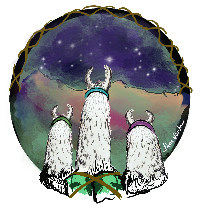Permits- Securing a permit varies widely from region to region. Generally, permits for National Forest wilderness areas are easier than permits for National Parks areas to obtain. Some trailheads have no quotas, and others do. Most areas with quotas have reservations available for about half the spots. You apply online six months in advance. Many popular trailheads will assign all the reservations very quickly that night. Make sure you are familiar with the online system and have your complete itinerary before you start. If unlucky at obtaining a reservation, your second option is getting in line at the ranger station the morning of departure. Most offices open at 8am, but the popular trailheads will have a line start much earlier. If unsuccessful your third option is to use a more remote trailhead.
Example: Tuolumne Meadow in Yosemite has a huge demand for JMT and PCT permits. If unsuccessful try Mammoth south of Yosemite.
They have four trailheads accessing the JMT-PCT trail, Agnew Meadow, Reds Meadow, Red Cones and Duck Lake. This is about 1 hour and 45 trail miles south of Tuolumne Meadow. Or go to Twin Lakes trailhead in the Hoover Wilderness about 1 hour and 50 miles north of Tuolumne Meadow and explore Northern Yosemite. This trailhead has no quotas. This is just an example of one high demand trailhead that has surrounding lower demand entry points that can access beautiful wilderness areas.
Loose Dogs- National Parks do not allow dogs in the wilderness. National Forests do. Most dogs you encounter are well behaved with owners that have leashes handy. Quite often I will encounter a dog or dogs off leash with no humans nearby. I will stop and start yelling for the owners to come put their dog on a leash. I tell them that my llamas are afraid of dogs (they are not really) and that they need to take their dog 20 to 30 feet off the trail. Most people comply happily, but I have had a few bad encounters with dogs and I now carry Bear Spray. Make sure you check the wind before you spray.
Public Relations on the trail-Llamas are a big deal on the trail in the middle of nowhere. There will be about ten general questions people will ask: Species, gender, how much weight, spitting, etc. Depending upon your schedule that day, you can have a nice chat or smile, wave and keep on hiking. Much of my time in the backcountry is spent Training and conditioning so I like to stop and talk and let my llamas interact with strangers. People will eventually ask if they can touch touch them. Many times after petting them I will hand the lead rope to them and step back while their friends take pictures. I am sure my llamas have ended up on many Christmas cards.
Bears and Coyotes- My main areas of llama packing stretch from the Southern Sierra to Sonora Pass. The only critter I fear is chipmunks. They are quick to pounce on a Snickers bar, or a bag of trail mix. Bears have never entered my llama camp. Alarming llamas seems to do the trick. Coyotes on occasion stumble into camp but usually make a hasty retreat. The areas I frequent have hunting pressure (National Forests) or strict bear canister control (National Parks). If I was planning a trip into Montana, Idaho, or Wyoming, I would definitely reach out to active llama outfitters or llama trekkers familiar with those locales’ predators. Firearms are prohibited in National Park Wilderness Areas. Firearms are allowed in National Forest wilderness areas for the taking of game in season. Do not bring a gun to protect yourself from predators. You will be at far greater risk from a self-inflicted gunshot.
![]()
